1. Onion Sector in India – Price Distress and Policy Challenges – Economy
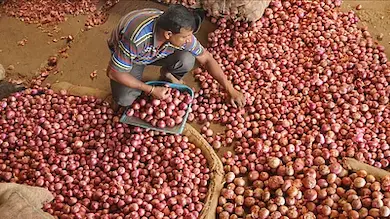
Why in News?
Farmers in Maharashtra, India’s largest onion-producing state, have launched protests due to a drastic fall in onion prices, which have dropped below cost of production. Farmers are demanding:
- Compensation
- Stable export policies
- Procurement support to alleviate financial stress.
Key Highlights
India’s Onion Sector at a Glance:
- India = 2nd largest producer of onions globally (after China).
- Annual production: 25–30 million tonnes.
- Major producing states: Maharashtra, Madhya Pradesh, Karnataka.
- Rabi Crop (harvested in March–May) contributes ~60% of total onion production. Known for its better storability.
Major Challenges
1. Price Volatility
- Onion prices swing drastically due to:
- Overproduction
- Crop failure
- Market speculation
- Lack of price forecasting mechanisms
2. Inadequate Storage Infrastructure
- High spoilage rates, especially in Rabi onions, due to poor storage facilities.
- Leads to supply glut and distress sales.
3. Export Policy Uncertainty
- Frequent bans or restrictions damage India’s credibility in global markets.
- Countries like China and Pakistan benefit from India’s unpredictable policies.
4. High Cost of Production vs. Low Returns
- Avg. cost: ₹2,200–₹2,500 per quintal
- Market price: ₹800–₹1,000 per quintal → Heavy losses
- Farmers are demanding:
- ₹1,500/quintal as compensation
- Ban on government sale of buffer stock during crisis
Policy Dilemma
- Consumer vs Farmer interests:
- Government releases buffer stocks to lower prices for consumers.
- But this hurts farmers during times of low market rates.
- Lack of long-term pricing policy and weak procurement mechanisms deepen the crisis.
Way Forward
| Suggested Reforms | Details |
|---|---|
| Stable Export Policy | Predictable rules to maintain international market trust |
| Procurement Support | MSP-like mechanism or targeted procurement during price crash |
| Investment in Storage | Scientific warehousing & cold storage infrastructure |
| Crop Diversification | Encourage farmers to reduce dependency on onions |
| Price Forecasting Systems | Tech-based early warning systems for farmers |
Exam Connect – Possible Questions
Prelims
1. India is the second-largest producer of onions in the world. Which of the following states is the largest producer of onions in India?
A. Karnataka
B. Madhya Pradesh
C. Maharashtra
D. Uttar Pradesh
Answer: C. Maharashtra
2. What percentage of India’s onion production is contributed by the Rabi crop?
A. 40%
B. 50%
C. 60%
D. 70%
Answer: C. 60%
Mains
1.Discuss the challenges faced by onion farmers in India with respect to price volatility, storage, and export policies. Suggest long-term reforms to address these issues. (Word Limit: 250)
2.How can India balance the interests of consumers and farmers in managing essential commodity prices like onions? Evaluate the role of buffer stocks and procurement policies in this context. (Word Limit: 250)
2. SC Precedents vs Gag Order in Adani Case – Polity
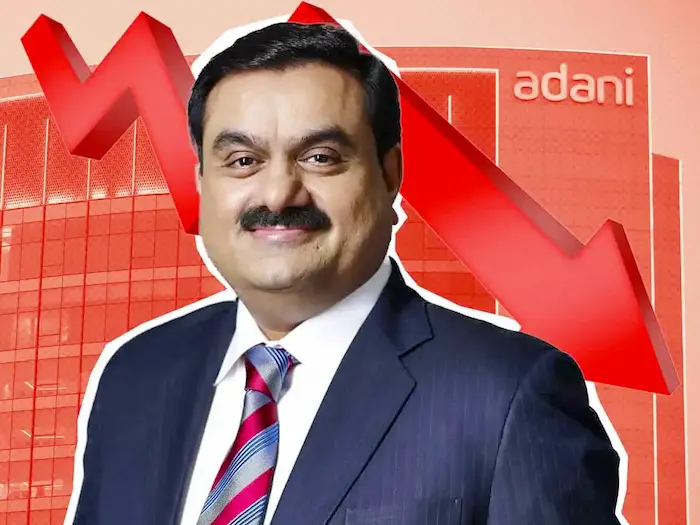
Why in News?
A Delhi lower court issued an ex-parte gag order restricting several journalists, including Paranjoy Guha Thakurta, from publishing or continuing to publish allegedly defamatory content against Adani Enterprises Limited (AEL).
The order mandated the removal of articles and social media posts (including satirical content), and the Ministry of Information and Broadcasting (I&B) later issued takedown notices removing:
- 138 YouTube videos
- 83 Instagram posts
Key Takeaways
Free Speech vs Defamation: Judicial Balance
- The case raised serious concerns regarding freedom of expression, prior restraint, and due process.
- The Delhi High Court quashed the gag order, citing violation of natural justice and lack of judicial scrutiny over the content.
Legal and Constitutional Dimensions
1. Bonnard Principle (1891 – UK)
- Origin: Bonnard v. Perryman
- Standard: Courts should not grant an injunction unless it is clear that the defendant cannot justify the allegedly defamatory statement.
- Adopted in India by the Supreme Court in several defamation-related rulings.
2. SC Ruling in Bloomberg Case (2024)
- Reaffirmed that pre-trial injunctions in defamation matters must be:
- Exceptional
- Justified only when greater harm may result without it
- Speech restrictions must pass strict scrutiny due to potential chilling effect.
3. Natural Justice & Ex-Parte Orders
- Ex-parte orders (without hearing the other party) are discouraged in cases involving:
- Freedom of speech
- Press freedom
- Courts emphasized the need to allow journalists to respond before takedowns, as removal causes irreversible harm.
Implications for Democratic Governance
| Concern | Explanation |
|---|---|
| Press Freedom | Overbroad gag orders undermine the media’s role in public accountability |
| Judicial Overreach | Lack of scrutiny risks enabling private entities to silence criticism |
| Public Right to Know | Blanket bans restrict access to information in matters of public interest |
| Due Process | Fundamental to Article 21; gag orders without hearing violate procedural fairness |
Way Forward
- Judicial Training on free speech jurisprudence
- Clear guidelines for issuing takedown orders
- Encourage self-regulation before judicial restraint
- Strengthen legal safeguards against misuse of defamation law
Exam Connect – Possible Questions
Prelims
1. Which of the following principles governs the issuance of injunctions in defamation cases, as adopted by Indian courts?
A. Maneka Principle
B. Bonnard Principle
C. Kesavananda Doctrine
D. Vishaka Guidelines
Answer: B. Bonnard Principle
2. Under which Article of the Indian Constitution is the freedom of speech and expression guaranteed?
A. Article 14
B. Article 19(1)(a)
C. Article 21
D. Article 32
Answer: B. Article 19(1)(a)
Mains
1.Discuss the constitutional limitations on prior restraint of speech in India. In light of the recent gag order in the Adani case, critically analyze the role of the judiciary in balancing reputation and freedom of expression. (Word Limit: 250)
2.“Freedom of the press is an essential pillar of democracy.” Examine this statement in the context of rising judicial gag orders and content takedowns. Suggest institutional reforms to protect press freedom. (Word Limit: 250)
3. Equalising Primary Food Consumption in India – Economy
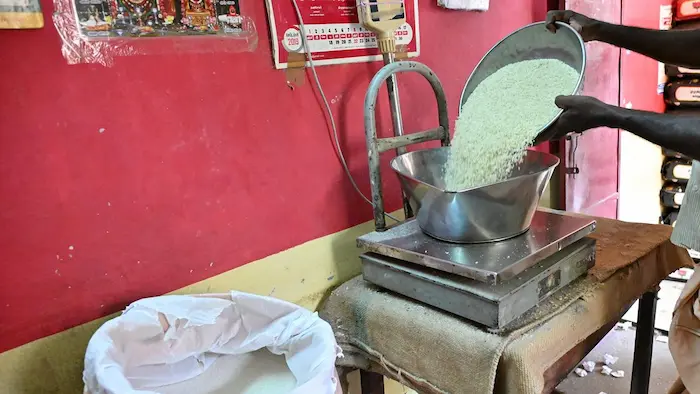
Why in News?
The National Sample Survey (NSS) released its Household Consumption Expenditure Survey (2024) after more than a decade. According to the World Bank’s Poverty and Equity Brief: INDIA (2025):
- Extreme poverty has declined from 16.2% (2011-12) to 2.3% (2022-23).
However, this raises concerns regarding:
- Accuracy of poverty estimation using income-based metrics.
- Invisibility of food insecurity and nutritional deprivation in traditional poverty measurements.
Key Highlights
Fall in Income Poverty vs Rise in Nutritional Concerns
- Income-based poverty appears to have reduced significantly.
- But many Indians still struggle with inadequate food consumption, especially nutrient-rich foods like pulses.
Traditional vs Holistic Approaches to Food Security
| Aspect | Traditional Method | Thali-Based Approach |
|---|---|---|
| Focus | Calorie intake | Actual meal cost (nutrition, variety, dignity) |
| Metric | Caloric threshold (e.g., 2400 kcal/day) | Cost of a wholesome thali (rice, dal, roti, vegetables, curd, salad) |
| Limitation | Ignores food quality and cultural diversity | Captures dietary balance and affordability |
| Insight | May understate food poverty | Reveals that many can’t afford two thalis per day |
Issues Identified
1. Pulse Consumption Gap
- Poorest households consume far fewer pulses than richer households.
- Reflects a protein deficiency and nutritional inequality.
2. Public Distribution System (PDS) Inefficiencies
- PDS focuses mainly on rice and wheat.
- Wealthier households receive almost the same subsidies as poorer households — leading to resource misallocation.
3. Food Security vs Income Poverty
- Income alone doesn’t capture food access, dietary quality, or regional variations in consumption.
- Need for multidimensional poverty assessment.
Policy Recommendations
| Reform | Purpose |
|---|---|
| Restructure PDS | Include pulses, oil, millets for nutrition security |
| Adopt Thali Cost Analysis | Use thali-based indicators to monitor real-world affordability |
| Targeted Subsidy | Refine beneficiary identification to curb leakages |
| Link to Nutrition Programs | Integrate PDS with ICDS, mid-day meals, and POSHAN Abhiyaan |
| Monitor Inflation Impact | Index thali cost to inflation trends for timely policy adjustment |
Exam Connect – Possible Questions
Prelims
1. Which of the following food items is not typically included in a standard Indian “thali” used as a metric for food affordability?
A. Rice
B. Pulses
C. Pizza
D. Vegetables
Answer: C. Pizza
2. In the context of food security in India, which of the following is a limitation of the current Public Distribution System (PDS)?
A. Focus on high-value crops
B. Inclusion of protein-rich pulses
C. Uniform subsidy distribution irrespective of income levels
D. Provision of packaged foods only
Answer: C. Uniform subsidy distribution irrespective of income levels
Mains
1.Critically analyse the limitations of income-based poverty estimates in India. How does the ‘thali-based’ approach offer a more holistic view of deprivation and food security? (Word Limit: 250)
2.“The Public Distribution System in India needs to transition from calorie security to nutritional security.” Examine this statement in light of the disparities in food consumption patterns revealed by recent surveys. (Word Limit: 250)
4. National Maritime Heritage Complex (NMHC) at Lothal – History & Culture
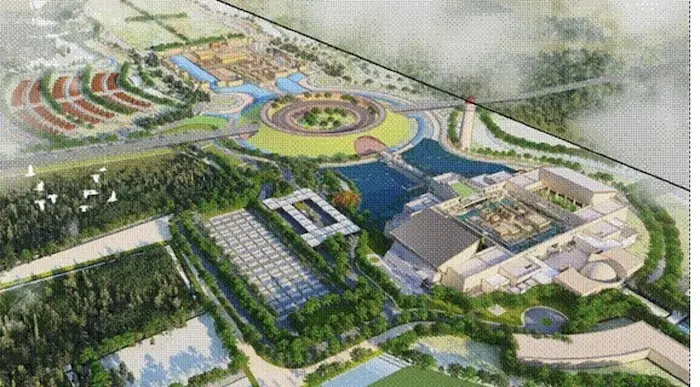
Why in News?
The Prime Minister recently reviewed the progress of the National Maritime Heritage Complex (NMHC), being developed at Lothal, in the Ahmedabad district of Gujarat.
The complex aims to celebrate and preserve India’s 5,000-year-old maritime legacy.
Key Highlights
Location
- Lothal, Bhal region, Ahmedabad, Gujarat
- Near the Gulf of Khambhat
Developer
- Ministry of Ports, Shipping and Waterways, Government of India
Historical Significance of Lothal
| Feature | Details |
|---|---|
| Time Period | Around 2200 BCE (Indus Valley Civilization) |
| World’s Oldest Dockyard | Lothal is believed to have the earliest known dockyard |
| Excavation | Excavated by S.R. Rao (1955–1960) |
| Dockyard Dimensions | 222 m × 37 m; connected to ancient Sabarmati river course |
| Trade Links | Evidence of maritime trade with Mesopotamia and other ancient civilizations |
| Water Management | Advanced systems: sluice gates, lock gates |
| Name Meaning | “Lothal” = Mound of the Dead (similar to Mohenjo-Daro) |
| UNESCO Nomination | Nominated in 2014 as a World Heritage Site |
Features of the National Maritime Heritage Complex
| Component | Description |
|---|---|
| Exhibition Halls | Dedicated to ancient maritime trade, shipbuilding, and navigational tools |
| Amphitheater & Museum | For public engagement and educational outreach |
| Maritime Park | Showcasing traditional boats and ship replicas |
| Research Facilities | To promote scholarly research on ancient maritime history |
| Focus Areas | Indus Valley maritime prowess, ancient ports, coastal trade routes, and oceanic diplomacy |
Importance and Impact
- Highlights India’s ancient seafaring tradition
- Promotes cultural tourism and heritage education
- Encourages pride in India’s historical maritime networks
- Bridges ancient history with modern maritime policy
- Likely to become a global knowledge hub for maritime studies
Exam Connect – Possible Questions
Prelims
1. Lothal, an important site of the Indus Valley Civilization, is known for which of the following?
A. Great Bath
B. Earliest known dockyard
C. Rock-cut caves
D. Iron metallurgy
Answer: B. Earliest known dockyard
2. Which of the following statements about the National Maritime Heritage Complex (NMHC) is correct?
A. It is located in Tamil Nadu.
B. It focuses only on modern shipping techniques.
C. It includes research and educational facilities.
D. It is developed by the Ministry of Culture.
Answer: C. It includes research and educational facilities.
Mains
1.Lothal provides crucial archaeological evidence about the maritime capabilities of the Indus Valley Civilization. Discuss its significance in understanding India’s ancient trade and urban planning systems. (Word Limit: 250)
2.What is the importance of developing cultural heritage complexes like the National Maritime Heritage Complex in preserving India’s ancient legacy? Discuss the role of such initiatives in promoting tourism and education. (Word Limit: 250)
5. US Revokes Sanctions Waiver on Chabahar Port – International Relations
Why in News?
The United States has revoked a key sanctions waiver (granted in 2018) that allowed India to develop and use the Chabahar Port in Iran, primarily for reconstruction efforts in Afghanistan. The revocation notice takes effect within 10 days.
Key Highlights
What is Chabahar Port?
- Location: Sistan-Baluchistan Province, Iran, on the Gulf of Oman
- Connectivity: Only Iranian port with direct access to the Indian Ocean
- Distance from India:
- ~550 nautical miles from Kandla Port (Gujarat)
- ~786 nautical miles from Mumbai
- Terminals: Two main terminals:
- Shahid Beheshti Terminal
- Shahid Kalantari Terminal
Strategic Significance for India
| Strategic Benefit | Explanation |
|---|---|
| Access to Afghanistan | Bypasses Pakistan, enabling trade and aid to landlocked Afghanistan |
| International North-South Transport Corridor (INSTC) | Links India to Iran, Central Asia, Russia, and Europe |
| Counter to China’s Gwadar Port | Located ~170 km from Chabahar in Pakistan, part of CPEC |
| Regional Diplomacy | Strengthens ties with Iran and Central Asian Republics |
| Geopolitical Leverage | Key to India’s Eurasian connectivity and strategic autonomy |
Implications of Waiver Revocation
1. Economic Impact
- Threatens India’s ₹200 crore investment in port development and logistics.
- Jeopardizes connectivity projects in Afghanistan and Central Asia.
2. Strategic Setback
- Weakens India’s influence in West Asia and Eurasia.
- Enhances China’s strategic footprint via Gwadar Port and Belt and Road Initiative (BRI).
3. Diplomatic Challenges
- Strains India-Iran ties, especially after long-standing cooperation on Chabahar.
- Creates friction in India–U.S. relations, where strategic cooperation (e.g., QUAD) is otherwise strong.
- Reduces India’s ability to play a neutral regional role in West and Central Asia.
Broader Context
| Issue | Significance |
|---|---|
| US Sanctions on Iran | Part of “maximum pressure” policy post-JCPOA withdrawal |
| India’s Strategic Autonomy | India has historically balanced ties between the West and Iran |
| Geopolitical Balancing | India must now reassess its role in Afghanistan, Eurasia, and Middle East post-waiver |
Exam Connect – Possible Questions
Prelims
1. Chabahar Port is located on the coast of which body of water?
A. Persian Gulf
B. Red Sea
C. Gulf of Oman
D. Arabian Sea
Answer: C. Gulf of Oman
2. Which of the following statements about the Chabahar Port is correct?
A. It is being developed by China under the Belt and Road Initiative.
B. It is located in Pakistan and rivals India’s investments.
C. It connects India directly to Europe via the Suez Canal.
D. It is part of the International North-South Transport Corridor (INSTC).
Answer: D. It is part of the International North-South Transport Corridor (INSTC).
Mains
1.Discuss the strategic importance of the Chabahar Port for India. How does the revocation of the U.S. sanctions waiver affect India’s regional connectivity and geopolitical interests? (Word Limit: 250)
2.The Chabahar Port project is a reflection of India’s foreign policy balancing act. In the backdrop of the U.S. sanctions, critically analyze how India can maintain strategic autonomy in its regional engagements. (Word Limit: 250)
6. Sirarakhong Hathei Chilli Festival – Celebrating Indigenous Agriculture & Culture – History & Culture
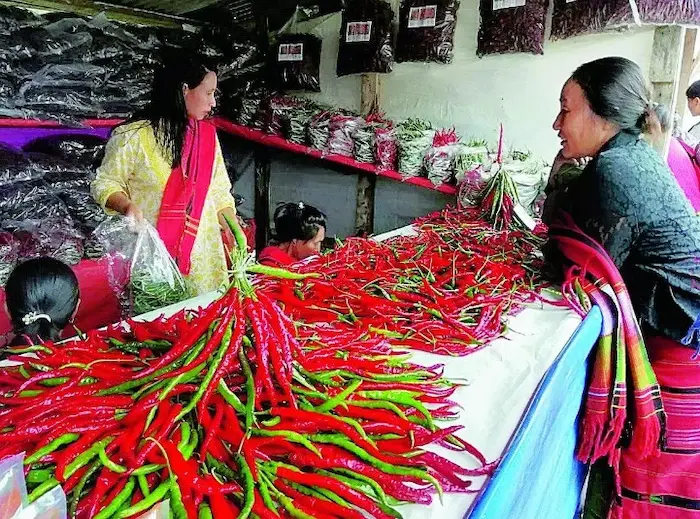
Why in News?
The 14th Sirarakhong Hathei Chilli Festival was recently inaugurated in Sirarakhong village, Ukhrul district, Manipur, showcasing the agricultural and cultural heritage of the indigenous Hathei chilli.
Key Highlights
About the Festival
- Started in: 2010
- Held annually in August
- Purpose:
- Promote the Hathei chilli
- Preserve traditional farming practices
- Boost agro-tourism and local economy
GI Tag
- Geographical Indication (GI) Status: Granted in 2021
- Reinforces the uniqueness and regional identity of the Hathei chilli
About the Hathei Chilli
| Feature | Description |
|---|---|
| Other Name | Sirarakhong Chilli |
| Region | Ukhrul district, Manipur |
| Farming Method | Traditionally grown on hill slopes using the jhum (shifting cultivation) method |
| Color & Flavor | Bright red, unique aroma, medium pungency |
| ASTA Value | High American Spice Trade Association (ASTA) color value – preferred for natural food coloring |
| Nutritional & Medicinal Use | Rich in Vitamin C, antioxidants, calcium; used in local medicine |
| Culinary Uses | Cooking, pickles, flavoring, coloring, food processing |
Cultural and Economic Importance
- A symbol of community pride and cultural identity in Manipur’s hill districts
- Promotes sustainable agriculture and indigenous crop conservation
- Encourages rural tourism and local entrepreneurship
Broader Context
- Part of India’s push to promote indigenous GI-tagged products
- Supports vocal for local, Atmanirbhar Bharat, and One District One Product (ODOP) initiatives
- Helps preserve tribal agricultural traditions
Exam Connect – Possible Questions
Prelims
1. The Hathei chilli, recently in news, is traditionally cultivated in which Indian state?
A. Nagaland
B. Sikkim
C. Manipur
D. Assam
Answer: C. Manipur
2. The Hathei chilli received the Geographical Indication (GI) tag in which year?
A. 2015
B. 2018
C. 2020
D. 2021
Answer: D. 2021
Mains
1.Discuss the cultural and economic significance of indigenous food festivals in India, with reference to the Sirarakhong Hathei Chilli Festival. How do such festivals contribute to preserving traditional agricultural practices? (Word Limit: 250)
2.Examine the role of Geographical Indication (GI) tags in protecting indigenous products in India. Illustrate with examples from the North-East region. (Word Limit: 250)
7. India and SDG 3: Challenges and the Way Forward – Governance
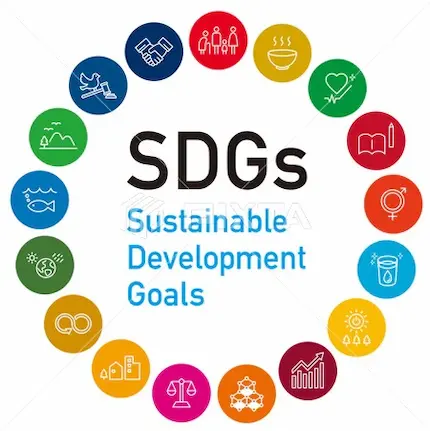
Why in News?
India achieved its best-ever position (99th out of 167) in the UN Sustainable Development Goals (SDG) Index 2025, improving from 109th in 2024.
However, the SDG Report reveals slow progress on SDG 3, which focuses on “Good Health and Well-being”, especially in rural and tribal areas.
Key Takeaways
India’s Progress on SDG Index
| Year | India’s Rank |
|---|---|
| 2021 | 117 |
| 2024 | 109 |
| 2025 | 99 |
Improvements: Access to basic services and infrastructure
Concerns: Persistent gaps in health and nutrition, especially in rural, tribal, and vulnerable populations
SDG 3: Key Health Indicators – India’s Status vs Global Targets
| Indicator | India’s Status (2025) | Global Target |
|---|---|---|
| Maternal Mortality Ratio (MMR) | 97 per 100,000 live births | 70 |
| Under-5 Mortality Rate | 32 per 1,000 live births | 25 |
| Life Expectancy | 70 years | 73.63 years |
| Out-of-Pocket Health Expenditure | 13% of household consumption | 7.83% |
| Immunisation Coverage | 93.23% | 100% |
Key Challenges
Infrastructure & Access Barriers
- Inadequate Primary Health Centres (PHCs) in rural/remote areas
- Poor coordination between healthcare levels
- Lack of trained personnel in underserved regions
Financial Burden
- High out-of-pocket expenditure deters the poor from seeking timely care
Non-Economic Barriers
- Malnutrition and sanitation deficiencies
- Cultural beliefs and social stigma around healthcare (esp. mental and maternal health)
- Low awareness of preventive health practices
Steps Needed to Accelerate Progress on SDG 3
| Strategy | Purpose |
|---|---|
| Universal Health Insurance | Reduce financial burden and improve equity (e.g., expand Ayushman Bharat) |
| Health Education in Schools | Promote nutrition, hygiene, mental health awareness; prevention > cure |
| Digital Health Tools | Telemedicine, digital health records, and AI for early diagnosis |
| Strengthen PHCs and Wellness Centres | Enable early detection and primary care in rural areas |
| Learn from Global Best Practices | Finland & Japan: integrated health education, community health awareness |
Role of Collective Action
- Policymakers: Integrate health education into school curricula, strengthen Universal Health Coverage
- Parents and Teachers: Advocate for and support health awareness from early childhood
- Civil Society: Address stigma and promote preventive healthcare practices
SDG 3 and Viksit Bharat Vision 2047
- SDG 3 is essential for human capital development, which underpins economic growth
- Healthier citizens = Higher productivity = Stronger and sustainable India
- Current progress shows potential, but only 17% of global SDG targets are on track
- India needs a whole-of-society approach to achieve SDG 3 by 2030 and the vision of Viksit Bharat by 2047
Exam Connect – Possible Questions
Prelims
1. What is the current status of India’s Maternal Mortality Ratio (MMR) according to the 2025 SDG Report?
A. 123 per 100,000 live births
B. 97 per 100,000 live births
C. 70 per 100,000 live births
D. 65 per 100,000 live births
Answer: B. 97 per 100,000 live births
2. SDG 3 under the UN Sustainable Development Goals focuses on:
A. Quality Education
B. Gender Equality
C. Good Health and Well-being
D. Affordable and Clean Energy
Answer: C. Good Health and Well-being
Mains
1.India has made significant improvements in the SDG Index rankings, yet progress on health and nutrition remains inadequate. Examine the key challenges in achieving SDG 3 and suggest strategies for inclusive health governance. (Word Limit: 250)
2.“Health education is central to sustainable development.” Discuss how integrating health awareness into India’s education system can contribute to achieving SDG 3 goals. (Word Limit: 250)

